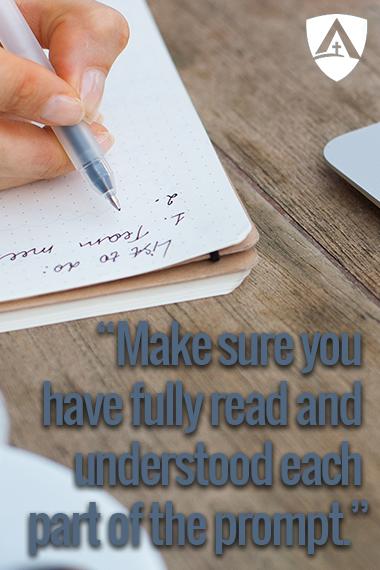INTRODUCTION
Writing essays is challenging and intimidating for many students. This is understandable, especially for students who have never written an essay before. It’s stressful trying to produce a longer piece of writing.
I believe that part of the stress comes from uncertainty about how to actually write an essay. Teachers provide written instructions, but maybe we can do more. Of course, there are tutorial videos online, but I want to do something a little bit different. I want to let students watch me write a complete essay. I won’t be pre-writing the essay or outlining it in advance, so students will be able to watch my actual process.
The video will be broken into steps and appear with written explanations, but students will also be able to view the video in its entirety in the final article of this series. I’ll be explaining what I’m doing in the video, and I have a few illustrations, but the majority of the videos will be me going through an authentic writing process.
 STEP 1: READING THE PROMPT
STEP 1: READING THE PROMPT
Reading the prompt carefully is your vital first step. I often receive papers from students who read the first sentence of the prompt, said “I got this” and then started writing without reading the rest of the prompt, and as a result they missed some key information. So, make sure you have fully read and understood each part of the prompt, including instructions about formatting. I like to read prompts with a pen in hand. As I read, I underline the different parts I need to include. This will help in the planning process.
Sometimes prompts require you to read a text. If you are writing an essay on a novel or several articles, this will obviously take a while, which is another good reason to read your prompt carefully when you receive it. You don’t want to procrastinate on something that could take a significant amount of time.
At other times, the text (for example a poem) will be included with the prompt. Either way, it is a good idea to read the required texts with a pen or pencil in hand (just like the prompt) and to take notes on ideas and quotes that you might want to use in your essay.
If you have a rubric, make sure you look it over and see what you are being graded on. For example, on most rubrics, content and organization are worth the most points. However, many students focus more on grammar and spelling. I’m not saying those are not important, but focus first on global issues.
Read the second installment in this series: Part 2: Choosing Your Topic

